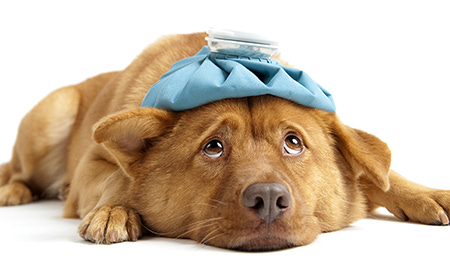Got Sick and Missed Training: Now What?
Navigating the return to training after being under the weather
Some important disclaimers before I start:
All I can give here are guidelines. Most people want hard and fast rules, a checklist to tell them exactly what to do in every circumstance. Follow the things on this list or spreadsheet, and the gains will flow like milk and honey! Nah, doesn’t work that way. I can give you guidelines, but you will need to apply some wisdom and common sense, and possibly even make an error or two before you get there. That’s ok, you’ll live.
Everything here is discussing strength training specifically, and should only be read in that context.
I’m solely discussing training here, not etiquette about sharing public spaces when sick.
First we’ll briefly discuss the practical effects of each missing training on its own and getting sick on its own, then come back to the practical advice of how to come back when you miss training BECAUSE you got sick. Just to be clear, we’re talking about missing a week or two here, maybe three at most; not coming back after months and months away, which is a totally different discussion.
The Effects of Missing Training
When you miss training for short periods of time, and here we’re talking about outside of getting sick - just missing for whatever reason, the first things to deteriorate are your overall work capacity, and your tolerance for volume and the ability to recover from it. Top end strength tapers off a little more slowly, and then actual muscle mass last of all, outside of extreme and rare circumstances of wasting.
This is not as self evident as it may seem. A lot of people think that even missing one day leads to loss of muscle mass, but that’s not the case. Your body had to work hard for that muscle: a bunch of work in the gym, eating a bunch of food, then turning that food into muscle. It won’t give up that hard earned tissue easily.
Generally things that are more reliant on biochemisty - the software - deteriorate more quickly, while things that are related to actual tissue - the hardware - deteriorate more slowly.
Think about it like an office building: it’s easiest to 1) swap in and out the furniture; harder to change the 2) wiring, ducts, HVAC; and hardest yet to demolish 3) the entire structure. That roughly corresponds to 1) work capacity and recoverability, 2) top end strength, and 3) actual muscle and connective tissue gains. Not a perfect physiological 1-to-1 perhaps, but good enough for our purposes here.
Practically speaking, pushing off a workout for one or two days normally has no effect. Most people seem to feel a little something if they miss 3-4 days. But it’s only after that, getting closer to a week, when the effects become really noticeable and make a tangible difference to most people, most of the time.
The Effects of Getting Sick
When you get sick, your body is both weakened by whatever is ailing you, as well as spending some of its resources fighting that. This manifests in different ways depending on both what’s making you sick and your own individual response, but the practical effect is a dual weakening. You may also have specific symptoms that make training hard impossible, such as incessant coughing, brain fog, etc.
Another key aspect I’ve found that most people don’t intuitively grasp is that the cessation of acute symptoms doesn’t mean your body has fully recovered. Regardless of the underlying physiological reasons, most people most of the time, remain in a somewhat weakened state for at least a day or two and often longer, after the cessation of their acute symptoms.
There is also the gray area when your symptoms are decreasing daily but not gone yet - and this can apply to both the acute symptoms and the slightly longer lasting general fatigue and weakness that lingers after acute symptoms are gone.
The Upshot
So what we have here in total is a large mix of physical challenges related to coming back from both missing training and being sick, with a plethora of unique possibilities and manifestations. This is why I started off by saying I can only provide guidelines and not hard and fast rules. Your situation might be different enough such that you have to apply the guidelines a bit differently, and your mileage may vary.
Additionally, you will have to use some common sense here, and if you don’t have that, you’ll only learn it by erring first and learning the hard way. Such is the way of many things in life. However, at least after reading this article, you’ll have a framework for making better choices the next time, instead of groping around in the dark.
The Guidelines
When
This one requires some common sense and good judgement, for which there really is no substitute. However it is good to know that many people can train at a scaled back level even while sick, under some circumstances.
My general guidelines are:
If the symptoms are mild, and primarily from the neck up, you might be able to train. Probably worth a try, at least.
If the symptoms are severe, or even just moderate but include stuff down in the chest, probably best to wait till they are at least largely on the way out.
If unsure, waiting one more day won’t kill you. But doing something less taxing like taking a walk or whatnot, might help a little and also give you an idea of if your desire to resume training is even possible - if you tucker out walking half a mile at a normal pace, you’re not ready to do something even more taxing yet.
If you think you’re ready and try, but it turns out you’re not - see below for more details - don’t try again the next day. Give at least one more day’s rest in between.
How
Prioritize, in order: Reps, sets, weight. Meaning: The first thing you drop is weight, then sets, then reps. The longer you missed and the more sick you were, the more weight you’ll have to drop, and also the more likely it is you’ll also have to drop some sets (volume). But the key thing to takeaway here is don’t come back and try to lift just as much as you did before, for less reps and sets. Instead, expect that you’ll need to drop weight and probably some sets (volume), but maintain the reps that you’re using for normal training, even if it means taking weight off the bar and doing a set or two less than you were before you got sick.
Common sense prevails here, but it’s normal to need to take 10%, even 20-30% off the bar when you first come back. This will depend again on how long you missed and how sick you were (or still are, if it’s on its way out and just very mild now). But the point is don’t force yourself to go heavier than you’re ready for, and this is the first thing you should give on.
Second, and usually also necessary, is sets. Common sense is again necessary here - if you were doing a 3x5 PR on a linear progression as a novice, your situation will be different than an intermediate lifter doing 5x5 @85% of 5RM, which will be different than an advanced lifter doing 7x5 at a range of 77.5-82.5% of 5RM. So I can’t give personal advice here. But dropping some volume may well be needed - even after taking weight off the bar. It also might not be, if you only missed a workout or two and were only mildly sick. But most of the time, it is needed in addition to taking weight off the bar.
As far reps go, you need to do your normal ‘volume’ reps. Don’t try to come back and do heavy singles, even lighter than you usually would. Don’t come back and do an intensity-based workout. Come back and do a ‘getting back into it’ easy first workout.
How Do You Know if You’re Not Ready
If you try to come back, take up to 25-30% off the bar, and even one set at that level still feels like too much (or worse, it feels too much before you even get to that point): take the weight off the bar and go home and rest. You’re not ready to train again yet.
This is what I referred to in #4 above. Don’t try again the next day. Use this as data for correlating how you feel with readiness to train, and rest at least one full day - not 24 hours, but a full calendar day - before trying again the day after tomorrow at the earliest.
Simplified Guidelines
For quick reference, assuming the common sense referenced here is being followed, the basic guidelines are:
Wait at least till symptoms are mild and largely on their way out, longer than that may be necessary.
When coming back, you will need to take some weight off the bar. 10%, 20%, maybe up to 25-30%. Don’t be a hero here.
You’ll likely need to reduce work set volume too in terms of the number of work sets. How much to reduce will depend on how much you were doing before, how long you missed, and how sick you were. Even working up to 1 work set at the reduced weight load is useful though, if you’re well enough to do it.
If you reduce load by 25-30%, and even doing one set there is too difficult, then you’re not yet ready to train. Stop, go home and rest, and don’t try again till at least the day after tomorrow.
“Too difficult” here doesn’t ONLY mean you literally can’t do it, it could also mean it’s just way harder than it ought to be. Once again, don’t be a hero.
Closing Comments
Unlike my previous article about how most people find excuses to do less in normal training, when it comes to being sick I’ve found most people actually try to find reasons to do more. This is a great impulse, but can mess you up pretty easily if you overdo it - which you probably will, left to your own devices. Without getting into my guess for the psychological reasons for why this is, compared to regular training when most people find excuses to do less, I’ve found it overwhelmingly true that people try to find reasons to do more when coming back from being sick. So use these guidelines to avoid the trap of doing too much, too soon when coming back to training after being sick.







